Brazilian Air Force
FAB - Força Aérea Brasileira
By Leandro Maldonado
The Brazilian Air Force (FAB) is the biggest air force in Latin America; it operates more than 600 aircraft and has more than 50.000 personnel. The FAB is subdivided into four big operational commands:
- I FAE (I Força Aérea)
Advanced fixed and rotary wings instruction; - II FAE (II Força Aérea)
Maritime patrol, SAR, helicopters transport roles and Navy support; - III FAE (III Força Aérea)
Fighter command. It has all first line combat assets under its control. Fighter, attack and reconnaissance aircrafts; - V FAE (V Força Aérea)
Responsible for the transport missions.
The Aeronautic Ministry was created in January 20, 1941, and absorbed the former Army and Navy aviation under his command. In 1944 the Brazilian Air Force joined the ally forces in Italy and operated there for about seven months, this was the FAB baptism in a real conflict.
In 1999 after a creation of the Ministry of Defence (MoD), the Aeronautic Ministry changed his designation to Aeronautic Command, but no big changes happened to the air force structure, it kept almost the same organization it had before.
Like all air forces around the globe, the FAB has to find a way to keep its operational capabilities and to modernise its equipments with restricted budgets. Budgets constraints are a big problem everywhere not only in Brazil. Despite the sparse resources the air force receives, it is accomplishing some of its objectives and modernising itself to be ready to the XXI century demands.
The biggest, and most important, program of the FAB in the last years is the SIPAM (Sistema de Proteção da Amazônia - Amazonian Protection System), the operational part of the SIPAM is known by SIVAM (Sistema de Vigilância da Amazônia - Amazon Vigilance System). The SIVAM is a huge network of radars, sensors and personnel integrated to guard and protect the Amazonian Forest and its resources. In 2002 the Embraer R-99A AEW&C equipped with the Ericsson Erieye Airborne Radar and the R-99B SR (Electronic Intelligence Gathering version) entered in service and the aircrafts are one of the principal components of the system, they are based at Anapolis AB, near Brasilia and fly 24 hours a day basis over the Amazonian region.
The backbone of the Brazilian combat aviation is compound today by three vectors, the Northrop F-5E/F, the Embraer/Aermacchi A-1A/B (AMX) and the Embraer A/T-29 Super Tucano. The F-5s are under a modernisation program called F-5BR program, the aircraft official designation is F-5M. The upgrade is carried on by Embraer and Elbit, it includes a new avionics suite, a full glass cockpit with three MFDs, HOTAS configuration and a new multimode radar, the Italian Grifo F. The first F-5EM was handed over in September 21, 2005, and it is scheduled a rate of two aircrafts being delivered each month from that date onwards.
The A-1s (appealed by the Italians as "Pocket Tornado") are the main attack/ bomber aircraft of the FAB. There are three squadrons operating the A-1, one of them having the reconnaissance function as primer role, known by RA-1, but retain all attack capabilities of the A-1. The RA-1s are equipped with the RAFAEL's RecceLite reconnaissance system. Like the F-5, the A-1 is under a MLU (Mid Life Upgrade) program as well, this upgrade giving a high commonality between the avionics of the A-1M (MLU aircraft designation), the F-5M and the newly introduced Embraer A/T-29.
With the Mirage III withdrawn, the air defence of Brasília and region is done temporally by a mix of F-5s from 1º GAv and 1º/14º GAv until the 10 Mirage 2000C and 2 Mirage 2000B bought from the French Air Force surplus arrives at Anápolis. Those aircraft are already being modernized in France and the first four aircrafts are expected to be delivered in october 2006.The Mirage 2000's are meant to be in service for at least until 2015, when the Brazilian Air Force foresee the (postponed) F-X entering in service.
To replace the Embraer P-95 Bandeirulha in the maritime patrol duties, twelve Lockheed P-3A Orions have been bought from US Navy surplus and eight (with an option for a ninth) of them are being upgraded by EADS CASA in Spain, the remainder are to used as spare parts source. On the same day of contract signature for the P-3BR work, 29 April 2005, EADS CASA was also awarded a contract to supply 12 C-295M medium transport aircraft. Deliveries started in 2006 with the first aircraft arriving in October 2006. The first three C-295s, designated C-105A Amazonas in Brazilian service, were commissioned into service in a formal ceremony at Base Aérea de Manaus on March 31, 2007. The last of the 12 will join the FAB in 2008. The C-105 replaces the FAB's C-115 Buffalo fleet and will supplement the C-130 Hercules.
The main heavy transport aircraft is the Lockheed C-130H Hercules and it will not change soon. The "Herks" are receiving major upgrades, receiving a full glass cockpit besides many other modifications. The first upgraded C-130 entering operational service recently. There are four Boeing KC-137 used as transport and tankers roles. In 2005 FAB received one Airbus ACJ, callsign "Air Force One" and dubbed as "Santos Dumont". The ACJ is now the main presidential transport and it is assisted by two Boeing 737-200 and one AS-332 Super Puma, with the KC-137 still serving as presidential transport in case of necessity.
The basic pilot training is concentrated in Pirassununga (AFA - Academia da Força Aérea) and uses the Neiva T-25 and the well known Embraer T-27 Tucano for basic instruction. Advanced training is done at Natal AB in the AT-29 Super Tucano, which replaced the Embraer AT-26 Xavante in the conversion training course.


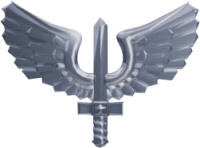


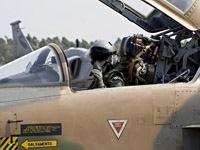
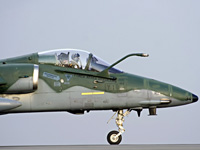
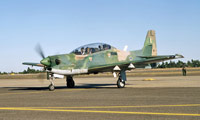
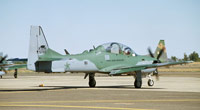
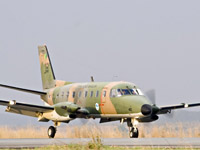
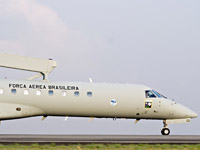
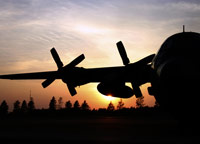

 Back to Index
Back to Index